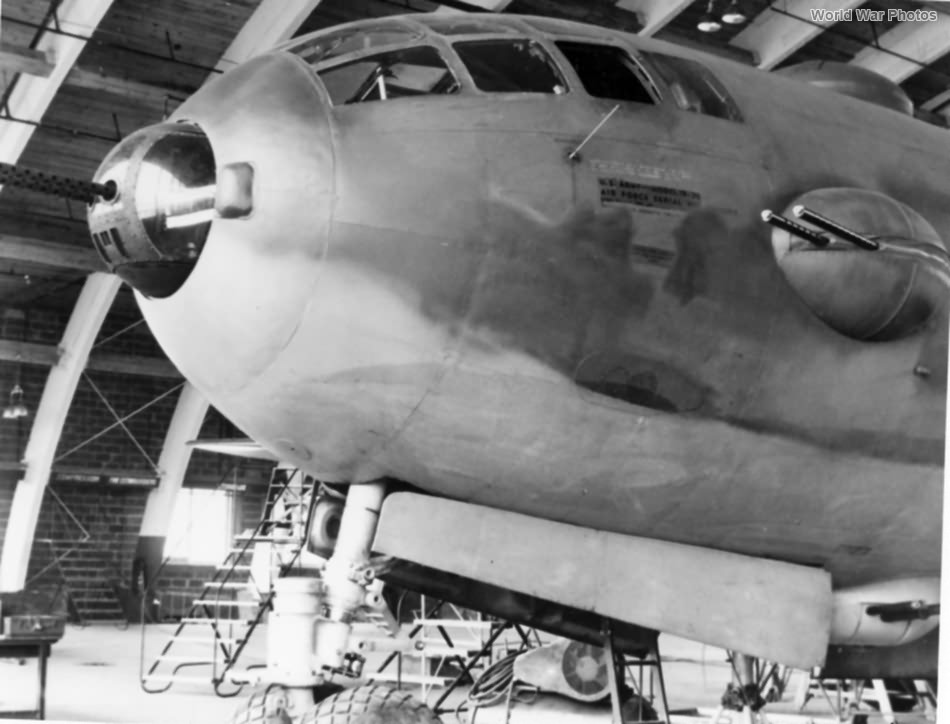The Boeing YB-29 Escorter was an experimental variant of the B-29 Superfortress, modified to serve as a heavy bomber escort in the early 1940s. The concept came about as a temporary solution while the development of effective long-range fighter escorts was still underway. The USAAC (United States Army Air Corps) ordered that new bombers, like the B-29, should have versions considered for escort duties, and this led to the development of the YB-29 Escorter in 1943.
Key Features of the YB-29 Escorter:
Original Armament (Standard YB-29):
- Dorsal and Ventral Turrets: The standard YB-29 had forward and aft dorsal and ventral turrets, each with twin .50-caliber machine guns (the forward dorsal turret was eventually upgraded to have four .50-cals). These turrets were remotely controlled by gunners in three sighting blisters.
- Tail Turret: The tail turret on the standard YB-29 housed two .50-cal machine guns and a 20mm cannon.
Escorter-Specific Modifications:
- ERCO Nose-Mounted Ball Turret: The YB-29 Escorter featured an experimental nose-mounted turret armed with two .50-cal machine guns.
- Side-Mounted Emerson Model 126 Barbettes: Four remotely-controlled barbettes (two forward of the wings and two replacing the aft gunner blisters) were installed, each armed with two .50-cal machine guns.
- Modified Dorsal and Ventral Turrets: The armament of the four dorsal and ventral turrets was changed to include two .50-cal machine guns and one 20mm cannon.
- Upgraded Tail Armament: The 20mm tail cannon was replaced with a more powerful 30mm weapon.
Despite the extensive armament modifications aimed at providing heavy firepower for escorting bomber formations, the YB-29 Escorter received only cursory testing. The concept was soon abandoned, as it became clear that developing dedicated long-range fighter escorts like the P-51 Mustang was a more effective solution.
After the escorter concept was shelved, the modified YB-29 served as a training aircraft, operating under the name Cross Country.
